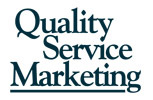Corporate communications expert Barry Nelson, retired founder of The Story Board, is a strong advocate of workplace journalism – a business communications approach that addresses employee concerns along with business concerns. With economic turmoil taking a toll on employee engagement, I wanted to get Barry’s perspective on how we can use employee communications to make a difference.
QSM: What’s the most important message that companies need to send to their employees to minimize disengagement?
Barry: The whole trick of getting through hard and trying change with your people still behind you emotionally is to establish a mutually caring human connection with them. Business reasoning and economic motivation aren’t unimportant, they’re just not the most powerful tools. To establish such a connection, the company can’t simply tell, but must show its staff that the company’s top management cares about them as human beings, not just work assets. That means a company must set up institutional infrastructure — policies, systems, programs — that average workers can recognize as promoting their welfare. This goodwill toward workers can’t be whimsical or dependent on the style of a boss who may be gone tomorrow — it has to emanate from and be embedded in the company itself.
A well validated body of research shows that companies where employees believe their organization (not just their direct supervisor) supports their best interests, are overwhelmingly more likely to enjoy high, across-the-board levels of employee loyalty and commitment than those where that perception is lacking. But for employees to get and maintain such a perception, they need a continuing stream of evidence that it’s so. This presents an opportunity for internal communication programs to systematically provide the needed evidence. That’s why I’ve always urged that at least a portion of the content in ongoing internal communications should be about issues employees experience in the work environment, and what the employer is doing to help. It can’t be all about management’s view of the world.
QSM: What internal communication trends do you see emerging in the coming year (or two)?
Barry: Really hard to say, but I would hope that the immensely more difficult job of maintaining employee commitment in these hard times, when work-force and perhaps pay reductions may be unavoidable, might drive our more resourceful colleagues toward more empathetic, less management-centric forms of communication. The rise of social media clearly offers that potential, as overall communication becomes more multi-directional and democratic. But without an underlying philosophy that management doesn’t have all the answers, that employee views matter greatly, even on issues not perceived from the top as central to the strategic agenda (but which could be disrupting efficiency and sapping worker vitality) — without this more humble institutional mindset, the mere implementation of new communication toys won’t do much good.
QSM: What advice do you have for smaller organizations who don’t have anyone formally responsible for employee communications?
Barry: Such an organization these days is almost surely one with a small enough work force that a high level of personal contact by the top leaders is either happening or at least possible. I’d advise those leaders, and the HR or administrative staff who support them, to remember that you lead people mainly by their feelings. And those feelings won’t run in your favor unless you show your people, often and sometimes very deliberately — going out of your way if necessary — that you genuinely care about them. There’s no more powerful communication, or one more likely to be repaid, than an act or expression of love. You don’t need a communication degree to send that message. But you do need to really feel it.
QSM: This is great advice for every manager and business communicator. Thank you, Barry!






